Cortona, Italy: Hilltop Charm, Big Views, and a Lot of Climbing
Cortona, Italy, has a way of sticking with you. Gary and I have visited twice—once for several nights in 2012, and again in 2017 for a day trip. We joke that you need to be part billy goat to live here, and honestly, it’s not far off. This medieval Tuscan town is perched high on a hill with steep, narrow streets that give your legs a workout—but the views are worth it. Totally worth it.
This post contains affiliate links that help keep this website running. By purchasing through our links, we make a small commission at no extra charge to you. Thank you for your support!
Getting Your Bearings
Cortona is situated approximately 70 miles southeast of Florence, in the Province of Arezzo, with an elevation of 600 meters (approximately 2,000 feet). From up here, you can see the wide Valdichiana valley below, and even catch a glimpse of Lake Trasimeno in neighboring Umbria.
The town is built in layers—literally—and is surrounded by massive ancient walls dating back to Etruscan and Roman times. One of the most surprising things? Via Nazionale, the main drag, is the only flat street in town. Locals still refer to it by its older name, Ruga Piana, and it’s where you’ll find many shops, cafés, and people strolling—especially in the early evening passeggiata.
Local tip: If mobility is a concern, Cortona isn’t the easiest town to tackle in a few hours. You can do it, but be ready to climb—often and steeply.
Click here to see exactly where this town is located in Italy.
What’s To See & Do In Cortona?
Basilica di Santa Margherita
Set above the town, this church is a rewarding climb. We asked a local policewoman for directions, and even though she only spoke Italian, her hand gestures told us everything we needed to know—up, then up some more… and then keep going. We laughed the whole way, but she wasn’t wrong. It’s a good hike.
The Basilica is dedicated to Cortona’s patron saint and houses her relics. Inside, the artwork and peaceful atmosphere make the effort worthwhile. If you’re lucky, you might catch a quiet moment with barely anyone else around.
Hermitage Le Celle
Just outside the town walls lies one of the most peaceful places we’ve ever visited. Le Celle, a Franciscan hermitage founded by St. Francis of Assisi in 1211, is still home to a small group of friars. The setting is serene, surrounded by woods, stone bridges, and the soft sound of water trickling through the valley. It feels untouched by time. Local tip: You can walk to Le Celle from the center of Cortona in about 30 minutes, but it’s a gentle hike and so worth it. Bring water and wear good shoes.
Meet the Chianina—the gentle giant of Tuscany!
This ancient breed is raised in the Valdichiana valley near Cortona and is famous for its role in the iconic Bistecca alla Fiorentina. You’ll spot these white beauties grazing peacefully in the hills, looking like they own the place. Because honestly… they kind of do.
Under The Tuscan Sun
Yes, Cortona was already known long before Frances Mayes wrote about it, but Under the Tuscan Sun gave it a second wave of fame. We love both the book and the movie, and we even tried to find her Casa Bramasole during one of our visits. No luck. Maybe next time!
You won’t find cheesy movie references plastered all over town, which is refreshing. But if you’re a fan, it’s fun knowing you’re walking the same streets that inspired the story.
Wine, Food, and Handmade Treasures
Cortona is proud of its wine—and for good reason. While technically outside the Montepulciano and Montalcino zones, it’s nearby and produces some excellent reds. Don’t be afraid to duck into a wine bar and ask for a local pour. Chances are you’ll end up sipping something robust and memorable.
As you walk, peek into the little shops offering local salumi, cheeses, olive oils, and artisan goods. You’ll also find woven textiles, pottery, and hand-carved olive wood—all crafted locally.
When it comes to food, Cortona sticks to tradition. Many restaurants serve Chianina beef, raised just down the hill in the Valdichiana. It’s one of Italy’s oldest and largest cattle breeds. If you’re a meat lover, try the Bistecca alla Fiorentina—a thick, juicy steak that’s grilled over an open flame and served rare.
Local tip: If you want the best seat in town for sunset, grab a drink at one of the small bars with outdoor seating near Piazza Garibaldi. The valley view is spectacular, especially when the golden light hits the rooftops.
Here are some of my favorite street photographs of Cortona. I think you can get an idea of how gradient some of these streets can get!
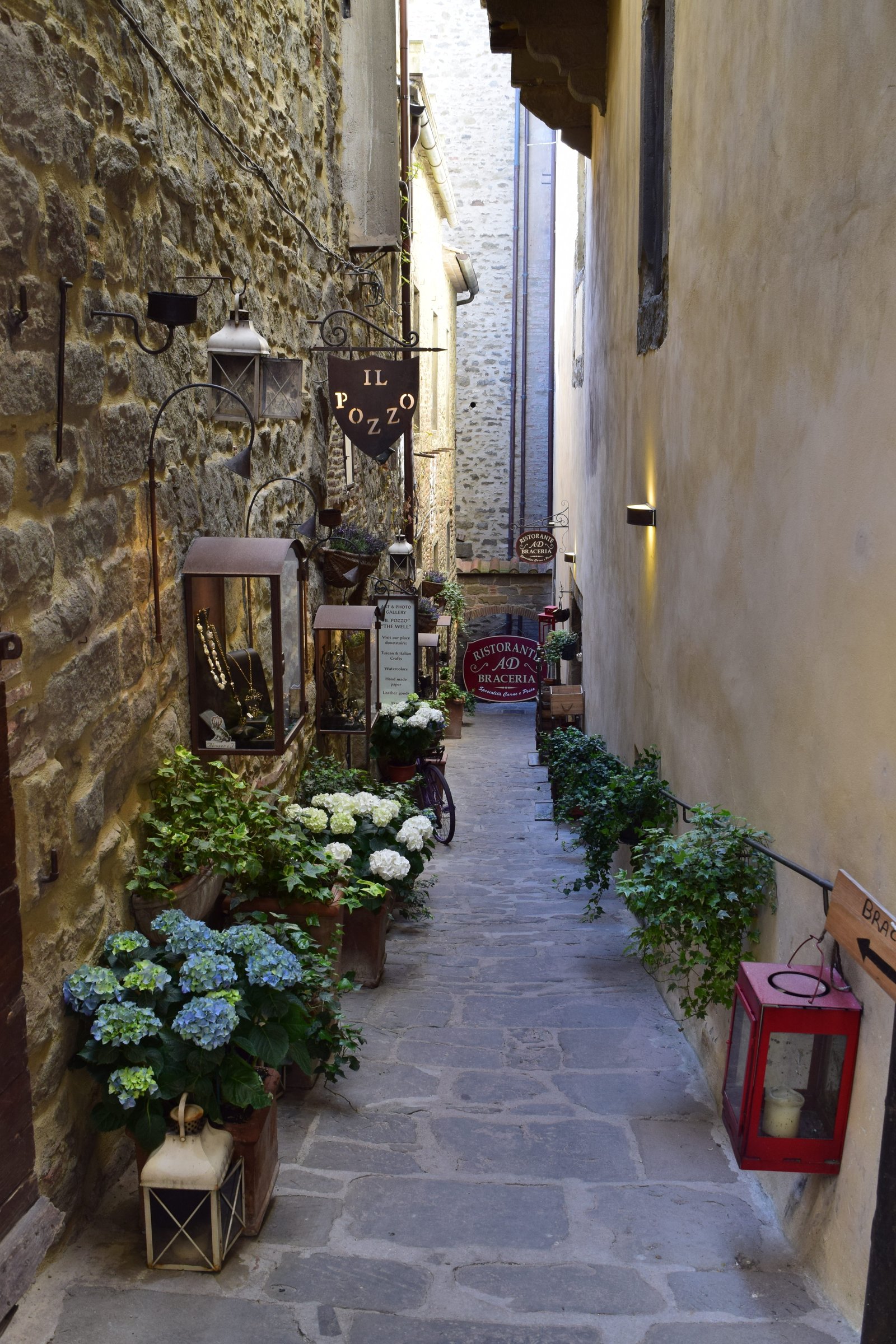

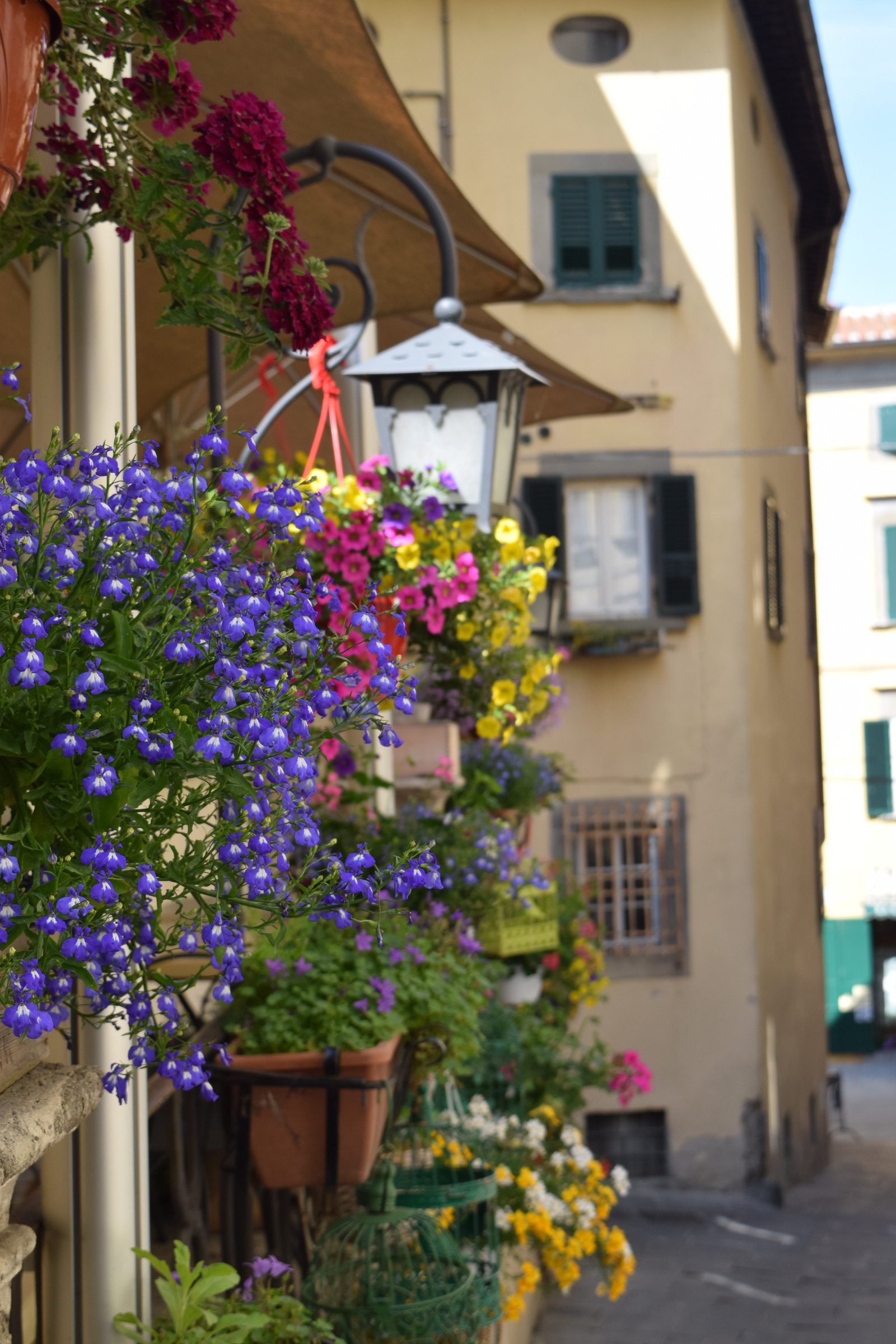
Cortona in a Day?
You can visit Cortona in one day—but be smart about it. Wear sturdy shoes, bring water, and plan for uphill climbs. Try to arrive early, so you can soak it all in without rushing. If you’re coming by train, note that the Camucia-Cortona station is located down the hill. You’ll need to take a quick taxi or bus ride up to the town center.
Suppose you have more time; that would be even better. Spend the night. Enjoy dinner without watching the clock. Stroll the quiet streets in the evening and see Cortona as the locals do—peaceful, proud, and still beautifully Tuscan.
For more information about Cortona


Editor’s Note: This post was initially published in July 2018 and was recently updated in December 2025 for accuracy and additional information.

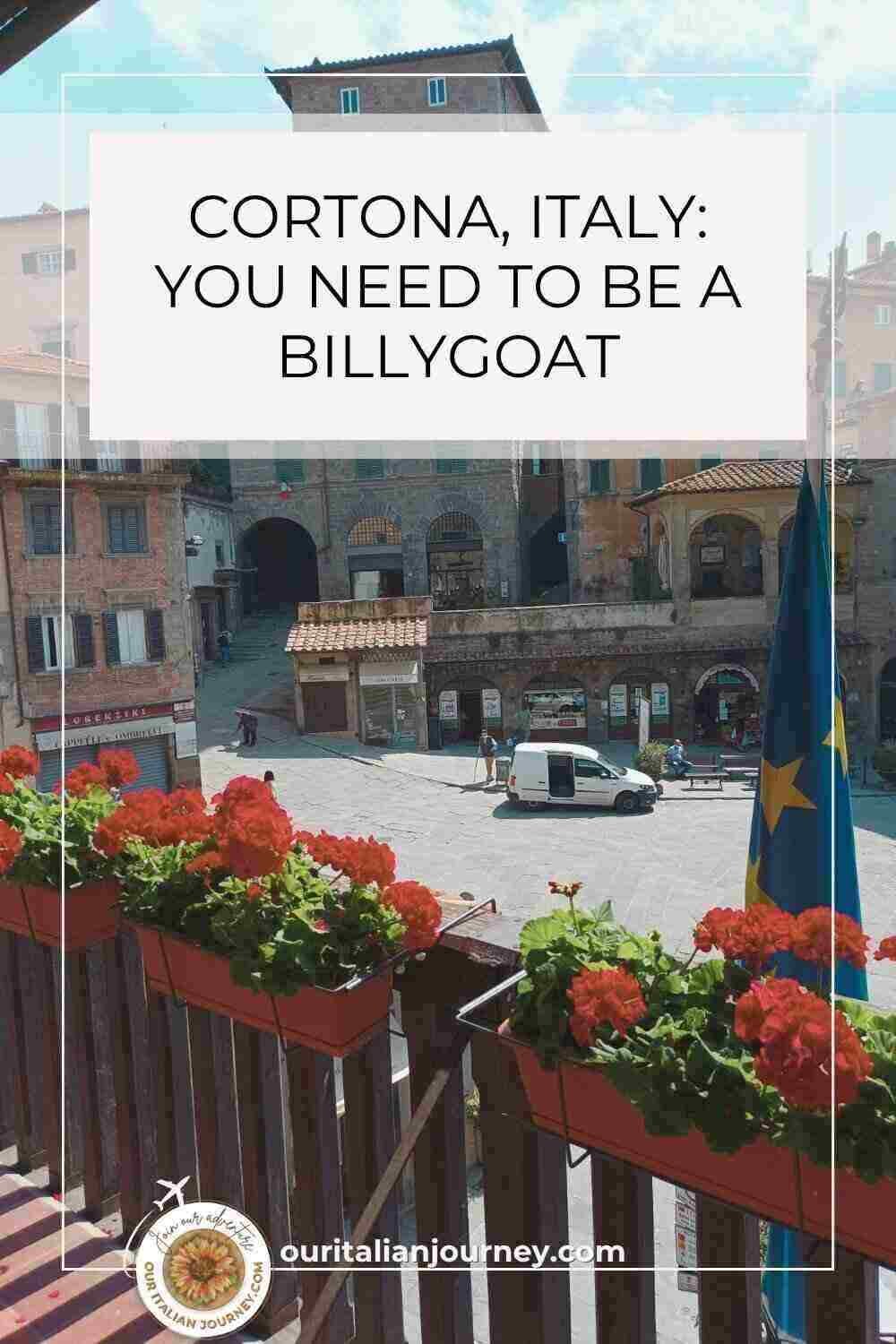

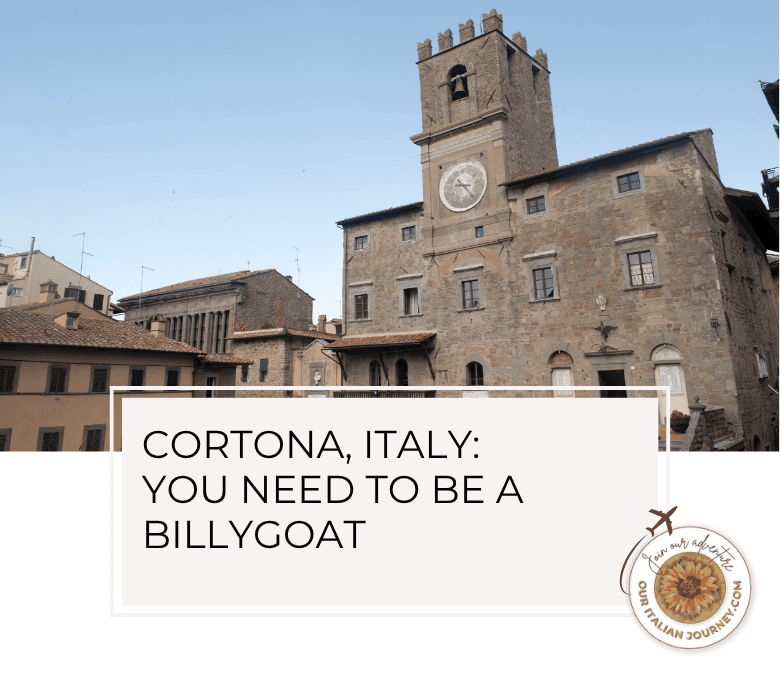
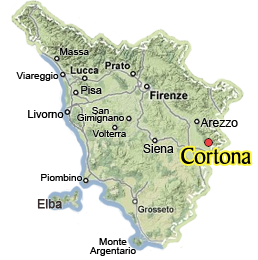

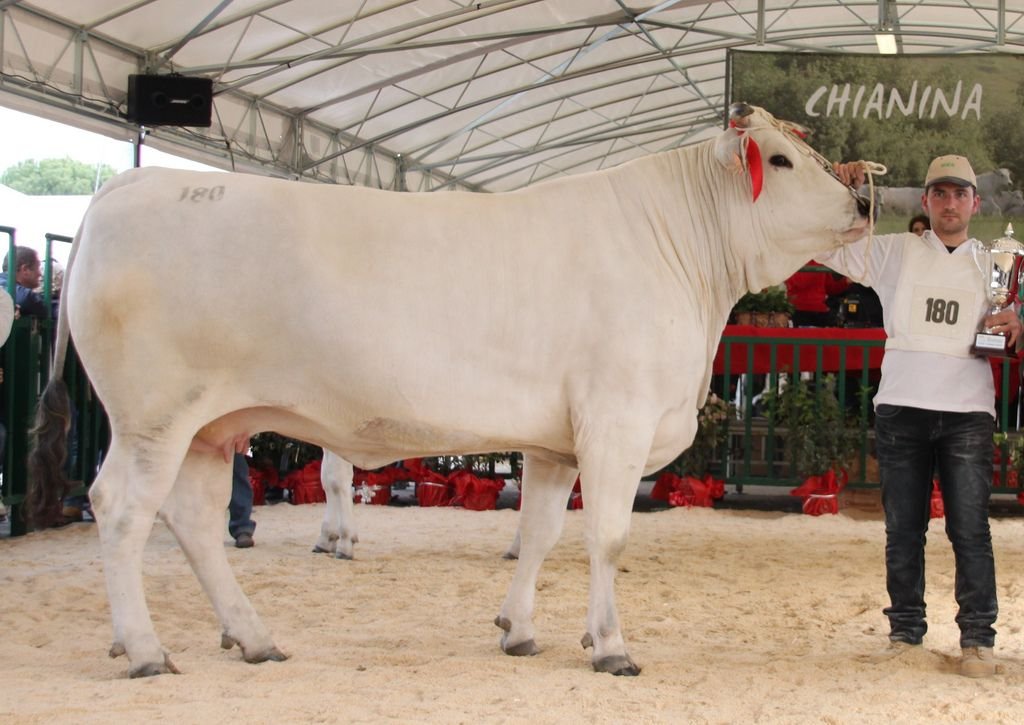


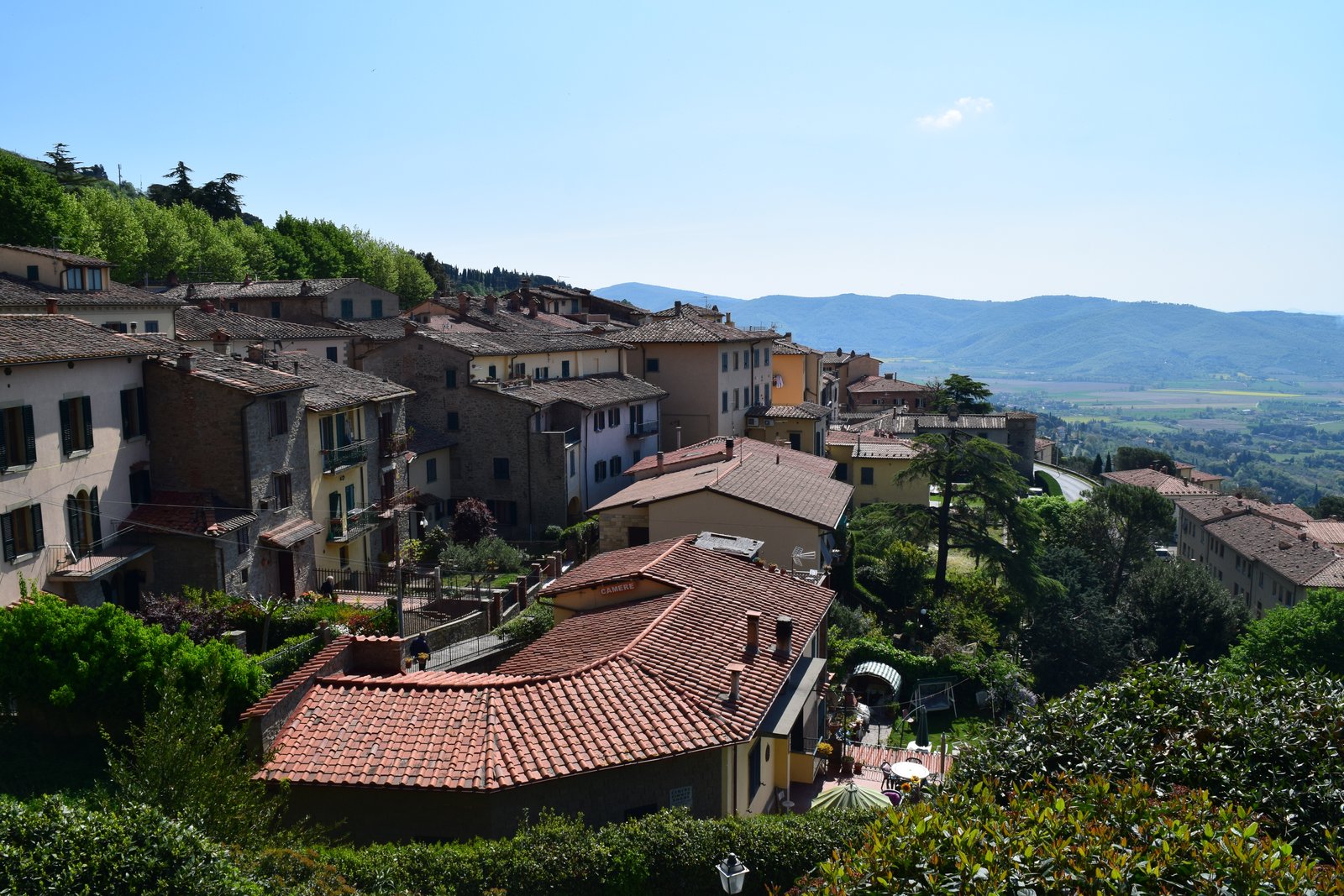


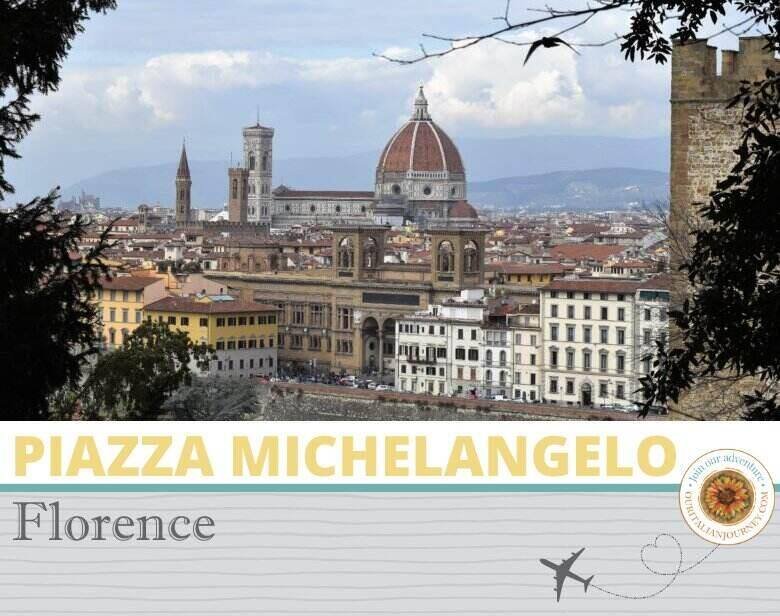

I think Cortona is a beautiful small town. We did find Bramasole on a windy road and photos taken, fun!
I agree Cortona is beautiful and great to visit, but too small for me to live in. Brava in finding Bramasole! We have yet to find it!! Thanks Sandra for the comment!!